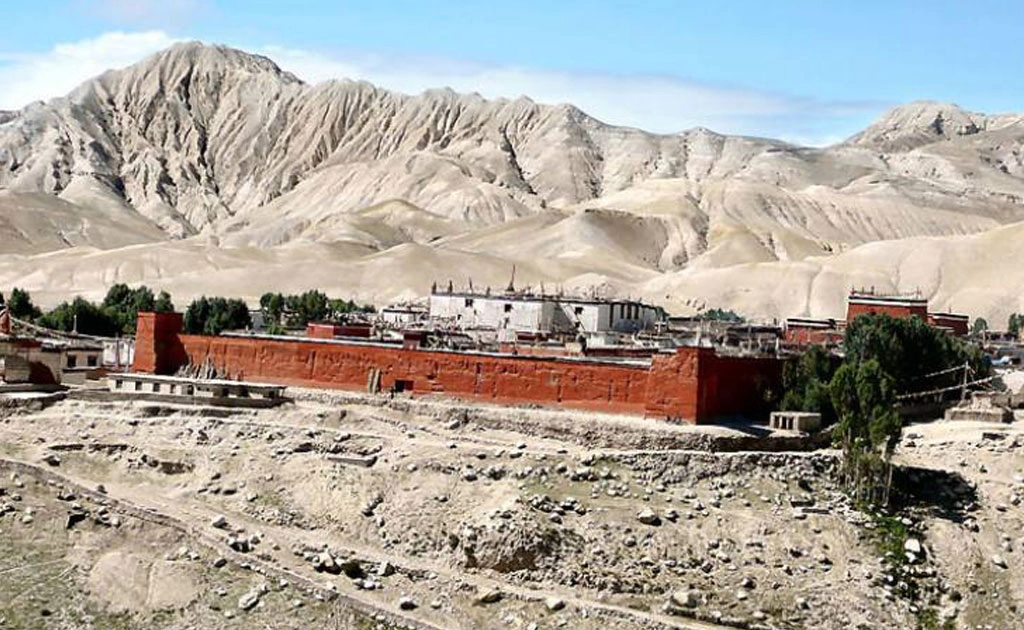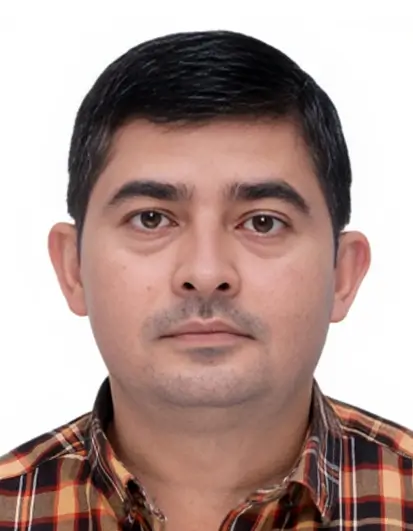Best Seasons to Do 17 Days Lo-Manthang Trekking
The best seasons to do 17 days Lo-Manthang trek in Nepal are during the spring (march-may) and autumn (September to November). In the spring season, the weather is generally stable, with clear skies and mild temperatures. The rhododendron forests along the trail are in full bloom, adding vibrant colors to the landscapes. The days are longer, allowing for more trekking hours, and the chances of encountering rain are relatively low. In the autumn seasons, the weather is dry and stable, with clear visibility and pleasant temperatures. The skies are generally clear, offering breathtaking views of the surrounding mountains, including the stunning Annapurna and Dhaulagiri ranges. The trails are at their best conditions and you can witness various festival and cultural events during this time.
Packing Tools for 17 Days Lo-Manthang Trekking
- A few pairs of Thermal tops
- Fleece jacket/pullover
- Windcheater - waterproof shell jacket one pair
- Down jacket
- Comfortable Fleece/wool trousers
- Trekking pants- at least 2 pairs
- Mittens/woolen gloves
- Warm Hiking socks
- Hiking Cotton trousers/t-shirts
- Sun hat/scarf, wash towel
- Sunglasses
- Sleeping bag
- Trekking poles
- Day bag above 40 L
- Basic personal first aid kit
- Water bottles, water purification tablets
Accommodations During 17 Days Lo-Manthang Trekking
Along the popular trekking routes, you will find tea houses or lodges at regular intervals. These are simple guesthouses that provide rooms with twin beds or dormitory style accommodation. The facilities are basic, with shared bathrooms and communal dining areas. In some villages along the trek, you may have the opportunity to stay with local families in their traditional homes. The facilities in homestays are usually modest, with shared facilities and traditional meals cooked by your hosts. It’s advisable to carry a sleeping bag for extra warmth and comfort.
Foods During 17 Days Lo-Manthang Trekking
During the 17 days Lo Manthang trek, you can expect a variety of food options to keep you energized and satisfied along the way. Most teahouses along the trek offer meals to trekkers. You can enjoy a range of Nepali and Tibetan dishes, as well as western options. Typically meals include dal bhat (rice with lentil soup), momo (steamed dumplings), thukpa (noodles soup), ghundruk (fermented leafy greens), fried rice, chapatti (flat bread) and various vegetables and meat curries.
Drinking Water During 17 Days Lo-Manthang Trekking
Drinking water is important because it keeps you hydrated. The safe drinking water is available in the teahouses and hotels during the 17 days Lo Manthang trek. You can buy the bottled water, filter water or hot water. It is advisable that bring the water bottles and water purification tablets by yourself then it will be plus point for you. You don’t have to buy the mineral water daily, you can fill the water in the tap and purify by yourselves that will help you to save money.
Wi-Fi, Electricity and Hot Shower Availability 17 Days Lo-Manthang Trekking
Wi-Fi availability is limited along the trekking route. In some tea houses, you may find Wi-Fi, but the connection can be unreliable and slow. It’s best not to rely on having consistent internet access during your trek. . Electricity will be limited because it is generated through solar panels. Charging electronic devices like cameras, phones or batteries may incur an additional fees. Hot shower facilities are available in most of the tea houses along the trekking routes. However, it’s important to note that hot showers are often not included in the standard room rate and may require an additional fee.
17 Days Lo-Manthang Trekking Difficulty
The 17 days lo Manthang trek is considered a moderately challenging trek. While it may not be the most challenging trek in the region, it still requires a good level of physical fitness. The highest point of the trek is the Lo La Pass, reaching an altitude of about 4,950 meters. Trekking at higher altitude can present challenges such as decreased oxygen levels, potential altitude sickness and increase physical exertion. It’s important to note that individual fitness levels and personal experience can vary, and what may be challenging for one person might be manageable for another. It’s recommended to go on a trek with experienced guide who can provide guidance, safety and assist with logistics.
Guides and Porters for 17 Days Lo-Manthang Trekking
While hiring guides and porters for 17 days Lo-Manthang trek is not mandatory, but it is highly recommended. Guides are familiar with the terrain, weather conditions, and the trekking routes. They can provide valuable information, guide you safely, and make the trek more enjoyable. Having a guide ensures that you stay on the right path, especially in case of challenging sections or changing weather conditions. Guides often serves as a translator between trekkers and the local community, helping facilitate communications and interactions. Porters are beneficial for carrying your heavy backpacks, allowing you to trek with less weight and focus on enjoying the journey. This can be particularly helpful at higher altitudes where the trek becomes more physically demanding.
Permits During 17 Days Lo-Manthang Trekking
The permits required for 17 days lo Manthang trek are: Annapurna Conservation Area (ACAP), Restricted area permit (RAP), Trekker’s Information Management System (TIMS) card.
Travel Insurance for17 Days Lo-Manthang Trekking
We strongly advise you to take travel insurance before joining 17 days lo Manthang trek or any trek in Nepal. Travel insurance provides coverage and financial protection in case of unforeseen events, accidents, medical emergencies, trip cancellations or interruptions and other unexpected situations that may arise during your trek.
Tipping for 17 Days Lo-Manthang Trekking
Tipping is a common practice in the tourism industry, including for trekking guides, porters, and other support staff. While tipping is not mandatory, it is appreciated and considered a way to show gratitude for the service provided. It’s important to note that these are general guidelines, and tipping is ultimately personal decisions. You may choose to adjust the amount based on your satisfaction with the service and your budget.
Why to Do 17 Days Lo-Manthang Trekking
The 17 days Lo Manthang trek takes you through the rugged landscapes of the mustang region, which is characterized by dramatic canyons, barren hills and deep gorges. The stark beauty of the landscapes with its unique rock formations, makes for incredible photo opportunities. You will also witness breathtaking views of Annapurna and Dhaulagiri mountain ranges. This region has preserve its ancient Tibetan Buddhist culture and traditions, providing a unique opportunity to visitors to immerse themselves in a rich cultural experience. You can explore monasteries, visit the walled city of Lo Manthang with its unique architecture and interact with the friendly local people. The mustang region features a distinct landscapes that differs from the lush valleys and forests found in other parts of Nepal. The rugged terrain, eroded cliffs and vibrant colors of the earth create a mesmerizing environment. Additionally, you will encounter the Kali Gandaki Gorge, the deepest gorge in the world, as you make your way through the trek.
Why to Do with 17 Days Lo-Manthang Trekking with Welcome Nepal Treks?
Nepal treks have been operating for many years and has extensive experience in organizing treks in Nepal. Nepal Treks offers a splendid 22 days damodar Kunda mustang Trek package to the customers at a very reasonable price with great services. We have knowledgeable and experienced guides who are familiar with the trekking routes, safety protocols, and local customs. Their expertise can enhance your trekking experience and ensure a smooth journey. We offers flexible and customizable itineraries to cater to individual preferences and requirements. We can tailor the trek to suit your time frame, fitness level and specific interested. Welcome Nepal treks takes care of the logistical aspects of the trek, including permits, accommodations, transportation, and meals.

